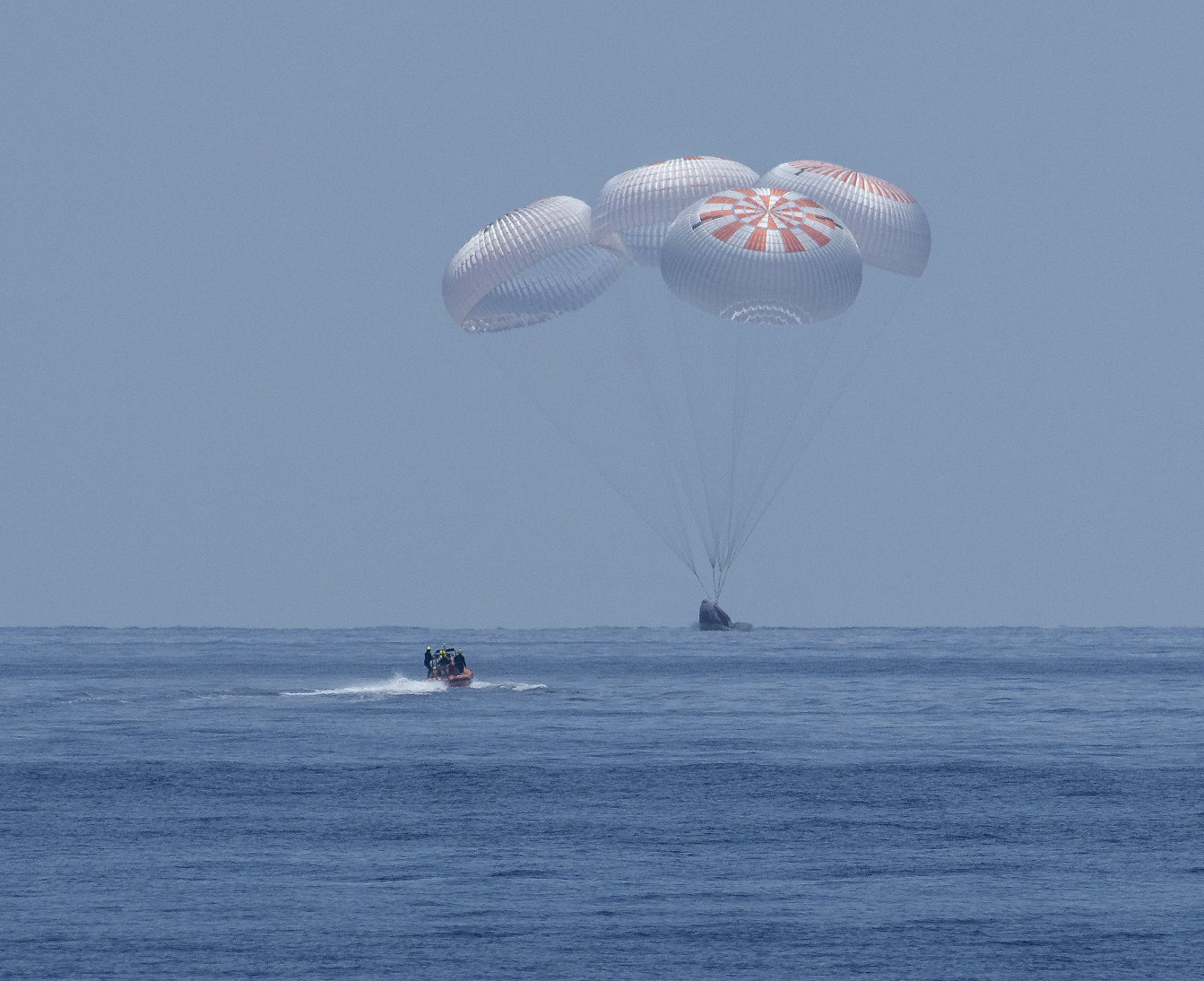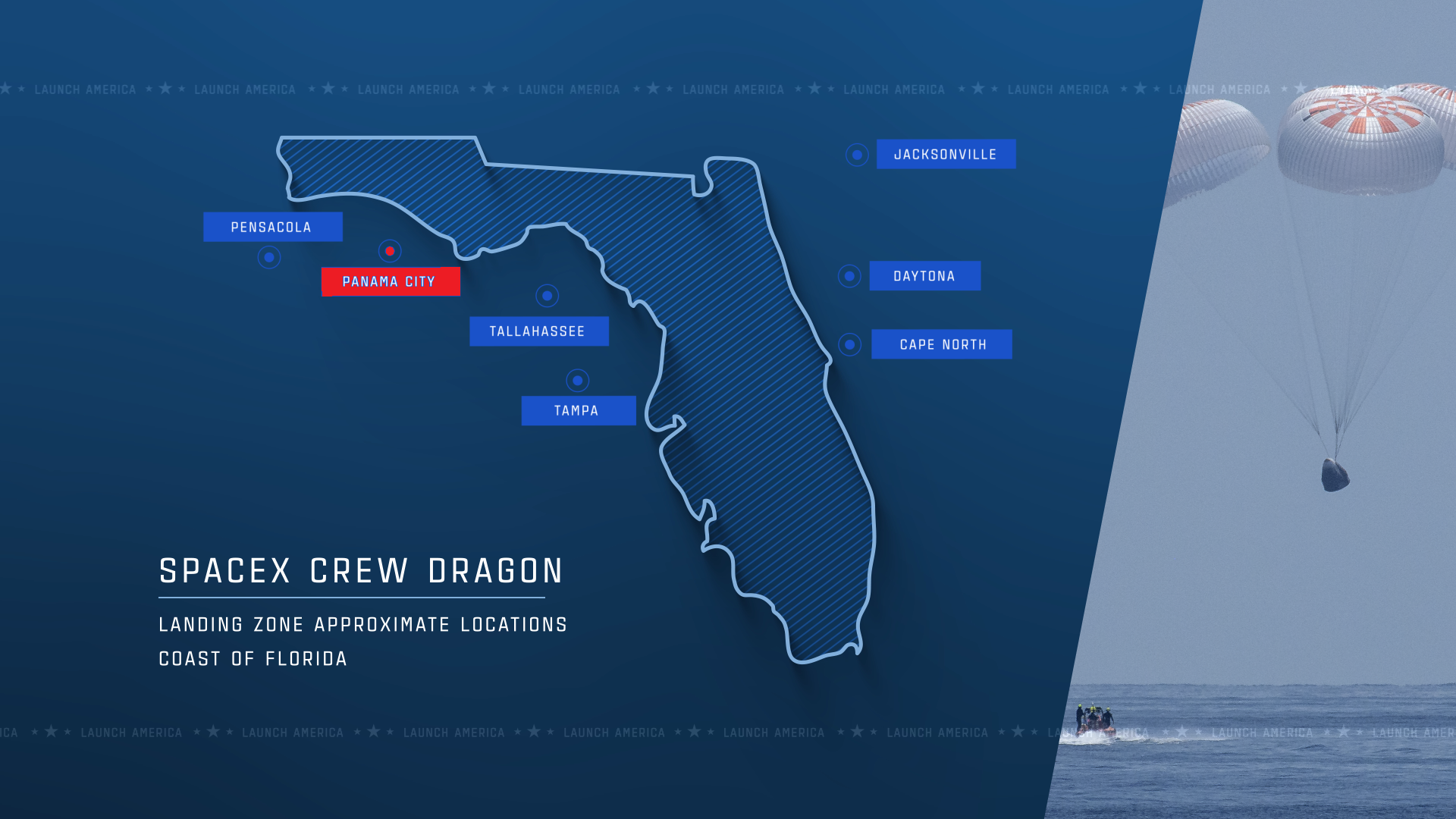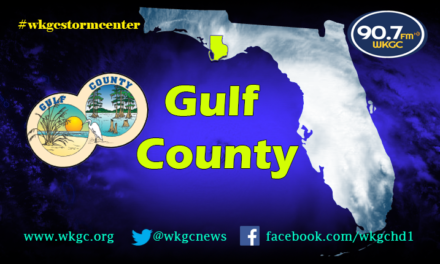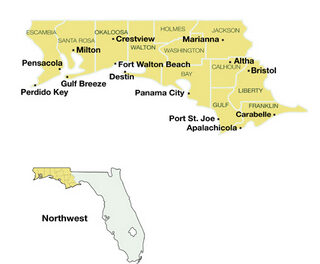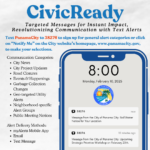
SpaceX Crew-1 targets splashdown in Gulf of Mexico off Panama City, Sunday morning.
The SpaceX Crew Dragon Endeavour spacecraft is seen as it splashes down in the Gulf of Mexico on Aug. 2, 2020. Credit: NASA/SPACEX
Houston, Texas – SpaceX Crew-1 mission with NASA astronauts Michael Hopkins, Victor Glover, and Shannon Walker, and Soichi Noguchi of the Japan Aerospace Exploration Agency (JAXA) is now targeting a return to Earth no earlier than about 2:57 a.m. EDT Sunday, May 2, in the Gulf of Mexico off the coast of Florida. The Crew Dragon spacecraft, named Resilience, is scheduled to undock from the International Space Station at 8:35 p.m. Saturday, May 1, to begin the journey home.
NASA and SpaceX decided to move Crew-1’s undocking and splashdown from Friday, April 30, and Saturday, May 1, respectively, following a review of the forecast weather conditions in the splashdown zones off the coast of Florida, which predicted wind speeds above the return criteria. Crew Dragon is in great health on the space station, and teams now forecast ideal conditions for both splashdown and recovery during the weekend.
The return to Earth – and activities leading up to the return – will air live on NASA Television, the NASA App, and the agency’s website.
This will be the first night splashdown of a U.S. crewed spacecraft since Apollo 8’s predawn return in the Pacific Ocean on Dec. 27, 1968, with NASA astronauts Frank Borman, Jim Lovell and Bill Anders.
Crew-1 is the first of six crewed missions NASA and SpaceX will fly as part of the agency’s Commercial Crew Program, which worked with the U.S. aerospace industry to return launches with astronauts on American rockets and spacecraft from American soil.
The Crew Dragon will undock autonomously and depart from the space station with the capability to splashdown at one of seven targeted landing zones in the Atlantic Ocean or Gulf of Mexico off the coast of Florida. Resilience also will return to Earth important and time-sensitive research. The NASA and SpaceX teams select a primary and alternate splashdown location from the seven possible landing locations about two days prior to return, factoring in weather, crew rescue, and recovery operations. Additional decision milestones take place prior to undocking, during free flight, and before Crew Dragon performs the deorbit burn.
NASA and SpaceX closely coordinate with the U.S. Coast Guard to establish a 10-nautical-mile safety zone around the expected splashdown location to ensure safety for the public and for those involved in the recovery operations, as well as the crew aboard the returning spacecraft.
NASA’s SpaceX Crew-1 return coverage is as follows (all times are Eastern):
Saturday, May 1
6 p.m. – NASA TV coverage begins for 6:20 p.m. hatch closure
8:15 p.m. – NASA TV coverage begins for 8:35 p.m. undocking
Sunday, May 2
2:57 a.m. (approx.) – Splashdown (NASA TV will provide continuous coverage from undocking to splashdown)
5 a.m. – Return to Earth news conference at NASA’s Johnson Space Center in Houston, with the following participants:
- Kathy Lueders, associate administrator, Human Exploration and Operations Mission Directorate, NASA Headquarters
- Steve Stich, manager, Commercial Crew Program, Kennedy Space Center
- Joel Montalbano, manager, International Space Station, Johnson
- Holly Ridings, chief flight director, Johnson
- Hans Koenigsmann, senior advisor, Flight Reliability, SpaceX
- Hiroshi Sasaki, vice president and director general, JAXA’s Human Spaceflight Technology Directorate
Media wishing to participate in the Return to Earth news conference by telephone must call Johnson’s newsroom at 281-483-5111 to RSVP no later than 4 a.m. Sunday, May 2. Those following the briefing on social media may ask questions using #AskNASA.
NASA’s Commercial Crew Program has delivered on its goal of safe, reliable, and cost-effective transportation to and from the International Space Station from the United States through a partnership with American private industry. This partnership is changing the arc of human spaceflight history by opening access to low-Earth orbit and the International Space Station to more people, more science, and more commercial opportunities. The space station remains the springboard to NASA’s next great leap in space exploration, including future missions to the Moon and, eventually, to Mars.
Learn more about space station activities by following @space_station, and @ISS_Research on Twitter, as well as the ISS Facebook and ISS Instagram accounts and the space station blog.
Learn more about splashdown locations, weather criteria, and recovery logistics, at:
https://www.nasa.gov/feature/nasa-s-spacex-crew-rescue-and-recovery/
See full mission coverage, NASA’s commercial crew blog, and more information about the mission at:
Approximate landing zone locations off the coast of Florida for the SpaceX Crew Dragon when it returns to Earth are pictured in this map. Target is Panama City, with Tallahassee as backup. Credit: NASA/SPACEX
NASA’s SpaceX Crew Rescue and Recovery
NASA and SpaceX support a multi-agency operation to protect astronauts for rescue and recovery efforts during the launch and return phases of the agency’s Commercial Crew Program missions to and from the International Space Station The effort requires coordination with recovery teams near the launch site, along the flight path of the Falcon 9 rocket and Crew Dragon spacecraft during ascent and for the return of the spacecraft from orbit around Earth.
Crew Dragon is designed to land in water and mission operations prioritize the timely recovery of astronauts after splashdown based on agency mission requirements.
To protect the health and safety of the astronauts, the recovery teams, and the general public, highly trained rescue and recovery personnel are pre-positioned for launch and return to react quickly to normal and emergency splashdown scenarios. Mission teams also establish safety zones in the water to protect the boating public around the area of splashdown.
Launch and Ascent Operations
Prior to launch, NASA and SpaceX coordinate with mission teams, including the Federal Aviation Administrator and Department of Defense, to help ensure the safest operations possible for the launch and reentry of the mission.
Mission teams need acceptable conditions for weather and public safety near the launch site and along the flight path of the mission to ensure the crew could be recovered safely in the unlikely scenario of an abort during the launch and ascent phase. Teams also ensure the launch and re-entry zones are clear of aircraft and boats for safety for the general public.
The Crew Dragon capsule has an integrated escape system using eight SuperDraco thrusters that can quickly and safely take crew members away from their rocket while on the pad and through their ascent to orbit. Possible landing locations extend northwards along the eastern coast of the United States to Newfoundland and then eastward across the North Atlantic towards Ireland.
In preparation for both launch and landing, U.S. Air Force pararescue forces are pre-positioned in key locations for the flight path, alert and ready to deploy at a moment’s notice. Should a spacecraft splash down within 200 nautical miles of the launch site following an abort, an HC-130 aircraft along with two HH-60 Pave Hawk helicopters will deploy from Patrick Air Force Base in Florida. These aircraft will carry a team of up to nine pararescue specialists along with rescue equipment and medical supplies.
After performing an initial hazard assessment, the team would prepare to enter the spacecraft and tend to the crew’s immediate medical needs before safely moving them onto a specially designed 20-person life raft. From there, the crew would be airlifted out for further medical attention.
For contingency landings outside of the 200 nautical mile-radius, a C-17 aircraft would deploy from either Charleston Air Force Base in South Carolina or Hickam Air Force Base in Hawaii, depending on the splashdown location, with the same type of team and equipment to execute rescue operations.
NASA and SpaceX also coordinate with international partners in the event the spacecraft were to splashdown in international waters.
Space Station Return and Splashdown Criteria
NASA and SpaceX are capable of supporting seven splashdown sites off the coast of Florida for the return of mission with astronauts from the International Space Station as part the agency’s Commercial Crew Program. The same splashdown down locations also would be supported for a return to Earth following an unplanned failure to dock with the space station after reaching orbit.
For normal operations, the NASA and SpaceX teams will select a primary and alternate splashdown location about two weeks prior to return from the seven possible locations, with additional decision milestones taking place prior to crew boarding the spacecraft, during free flight and before Crew Dragon performs a deorbit burn.
In advance of these decision milestones leading up to deorbit, teams will evaluate the forecasted weather conditions for the splashdown time and recovery readiness at the primary and alternate supported splashdown sites according to the mission’s weather constraints to determine if each site is “GO” or “NO-GO.”
For contingency operations, NASA and SpaceX teams will determine the best splashdown location based on specific criteria, including the location of the spacecraft in orbit, weather at expected splashdown site and the proximity of available rescue teams.
In cases where Dragon is not able to dock to the space station but is able to return to one of the seven supported landing zones, teams will use the same criteria in selecting the primary location.
There are seven potential splashdown sites off the Florida coast for SpaceX missions to return from orbit with astronauts, including: Pensacola, Tampa, Tallahassee, Panama City, Cape Canaveral, Daytona and Jacksonville.
Selecting the Return Location
Before undocking from the space station, SpaceX identifies daily departure opportunities and associated splashdown locations within a given return window comprising several primary and alternate landing site options. Crew Dragon has the capability to execute a unique series of orbit-lowering maneuvers using its Draco thrusters to line up its ground track for each primary location and maintain the capability to change to alternate sites in free-flight as weather constraints dictate.
Splashdown locations are selected using defined priorities, starting with selecting a station departure date and time with the maximum number of return opportunities in geographically diverse locations to protect for weather changes. Teams also prioritize locations which require the shortest amount of time between undocking and splashdown based on orbital mechanics, and splashdown opportunities that occur in daylight hours.
NASA and SpaceX closely coordinate with the United States Coast Guard to establish a 10-nautical mile safety zone to ensure public safety and for the safety of those involved in the recovery operations, as well as the crew onboard the returning spacecraft. Multiple notices are issued to the Mariners in advance and during recovery operations, and Coast Guard patrol boats are deployed to discourage boaters from entering the splashdown zones.
Immediately after splashdown, two SpaceX fast boats with personnel deploy from the main recovery ship. The first boat checks capsule integrity and tests the area around the Crew Dragon for the presence of any hypergolic propellant vapors. Once cleared, the personnel on the boats begin preparing the spaceship for recovery by the ship. The second fast boat is responsible for safing and recovering Dragon’s parachutes, which have at this point detached from the capsule and are in the water.
Once the main recovery vessel moves in, it hoists Dragon onto the main deck where is quickly moved to a stable location for the hatch to be opened. Medical professionals are on-hand to conduct initial checks and assist the crew. This entire process takes approximately 45 to 60 minutes, depending on spacecraft and sea state conditions.
Return Decision Milestones
Pre-Departure (1 to 2 days prior to approximate departure)
SpaceX and NASA will jointly make the decision to depart 48 hours prior to splashdown based on the status of the primary and alternate supported landing sites.
Additionally, a backup unsupported landing site with weather conditions that meet the splashdown criteria will be identified prior to departure to mitigate risk of weather changes and ensure a minimum of two GO landing sites are identified at all times. An unsupported landing site is any location outside of the pre-determined seven supported sites, and the U.S. Department of Defense (DoD) will lead crew rescue operations in this unlikely scenario, which is a last option
6 hours before undocking
NASA and SpaceX make the final decision on primary splashdown target.
2.5 hours before undocking
SpaceX will monitor changes to conditions until 2.5 hours prior to the scheduled undocking, when a determination to proceed with departure will be made. If conditions are marginal and exceed the accepted criteria, a joint recommendation by SpaceX and NASA will be made whether or not to proceed with undocking.
Free Flight
Crew Dragon shall proceed with departure phasing burns as planned even if conditions are marginal or NO-GO at any upcoming supported landing site and exceed the accepted criteria. Given the landing site may be 24+ hours away, and weather can change, Crew Dragon shall always proceed with departure phase burns to preserve the supported landing opportunity.
Wave-off
If conditions remain NO-GO at the supported landing site, SpaceX and NASA will made jointly make a decision to “wave-off.” In a wave-off scenario, Crew Dragon will remain in orbit for the next landing attempt 24-48 hours later.
5 hours before Deorbit (6 hours before Splashdown)
If conditions at upcoming landing site are marginal and exceed the accepted criteria, SpaceX and NASA will jointly make a decision about whether to proceed with deorbit.
Crew Dragon Claw Separation (1 hour, 20 minutes before Splashdown)
SpaceX will monitor changes to conditions through the decision to proceed with the deorbit burn (30 minutes before claw separation prep), when a final determination to proceed with deorbit will be made. The claw is located on Crew Dragon’s trunk, connecting thermal control, power, and avionics system components located on the trunk to the capsule.
SpaceX Crew Return Weather Criteria
The following weather conditions will be monitored for Crew splashdown sites and will be used to make the decision prior to departure and deorbit. Crew-1 and subsequent flights will be capable of splashdown under increased wind speeds.
Recovery Criteria
- Wind Speed: No greater than 10.5 knots (17.7 ft/sec)
- Wave Period & Significant Wave Height: Driven by wave height and wave period relationship; in general, when wave height and wave period are the same, the condition is no-go. No greater than 7 degrees wave slope.
- Lightning: No less than 10 miles and no greater than 25% probability of lightning in protected boundary
- Rain: > 25% probability of 25 dBz in protected boundary
- Helicopter Start & Hover Test: Pass-Fail test to confirm operational capability
- Helicopter Operational Limits: Vessel limits will apply on motion (pitch, roll), cloud visibility, cloud ceiling, and lightning
- Vessel Pitch, Roll: No greater than 4 degrees
- Ceiling: No less than 500 feet
- Visibility: No less than ½ mile for day and 1 mile for night
- Lightning: No less than 10 miles
Credit: NASA/SpaceX





